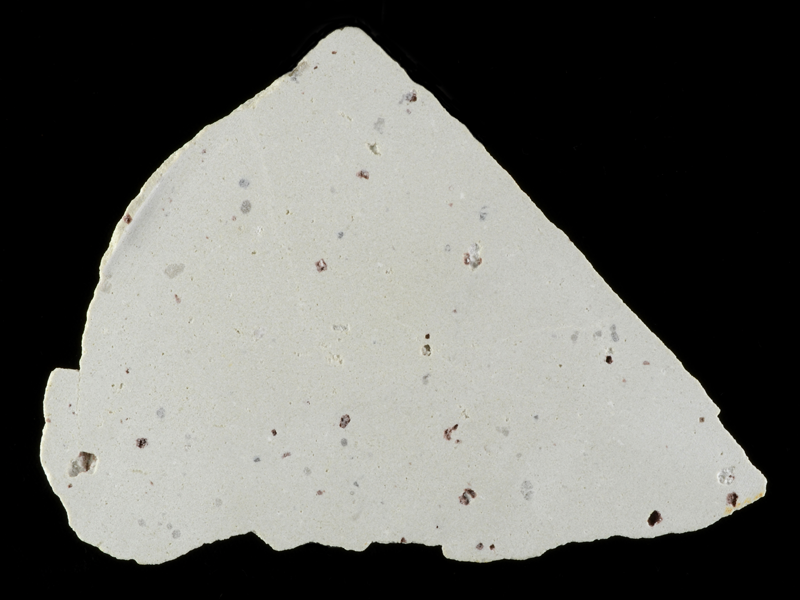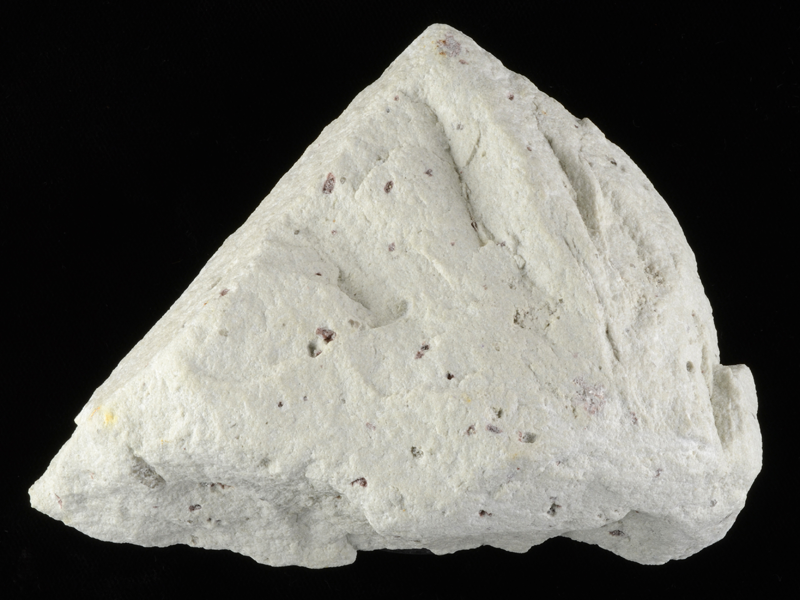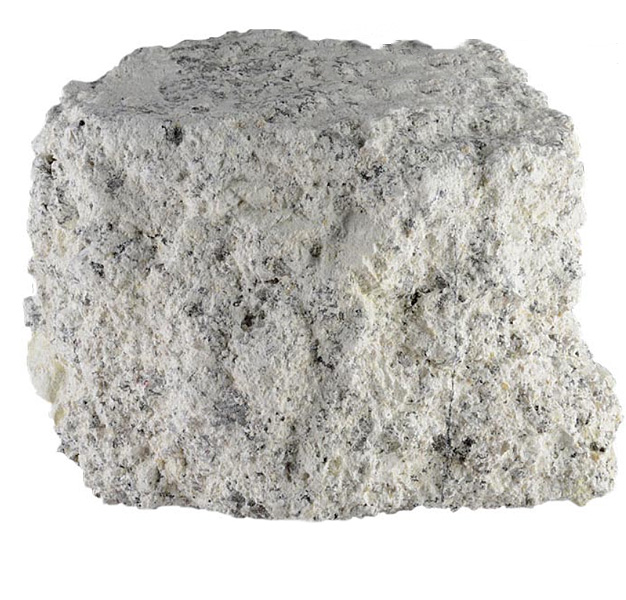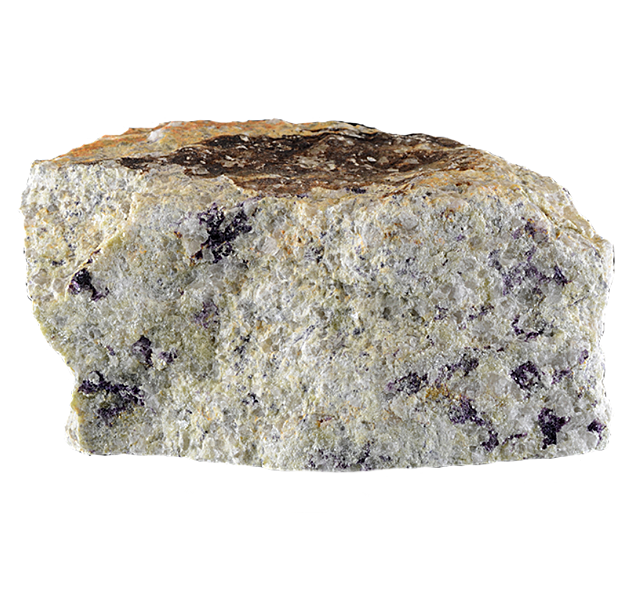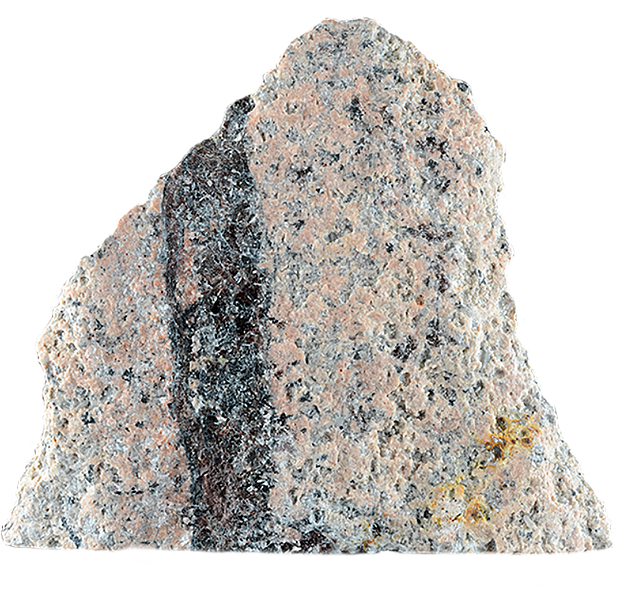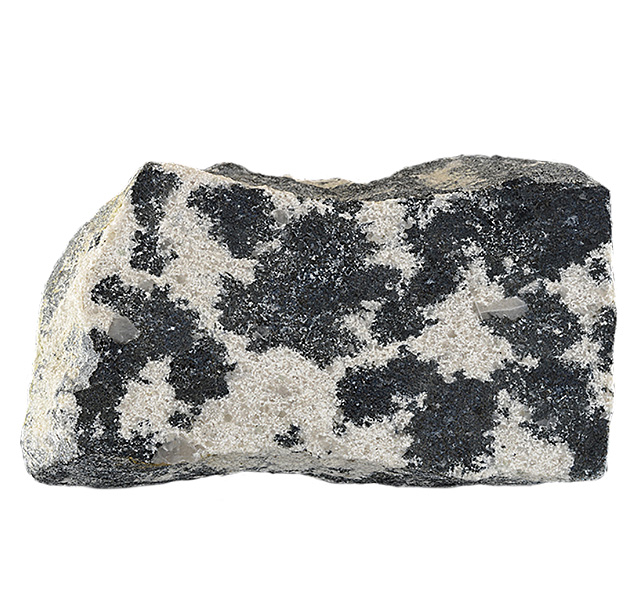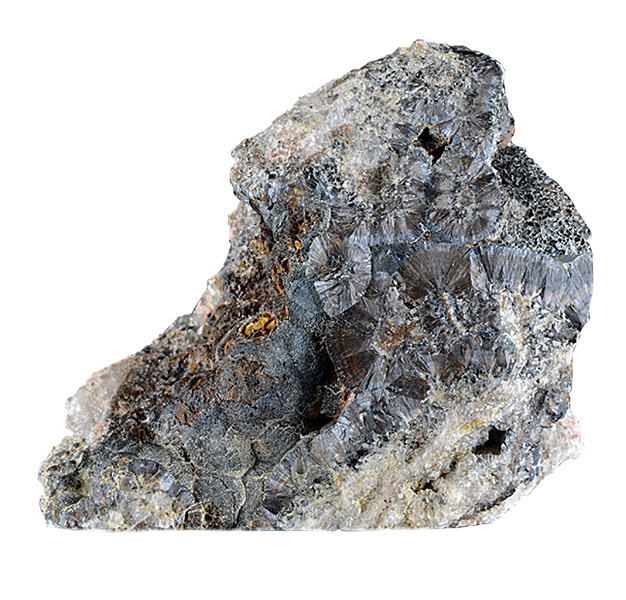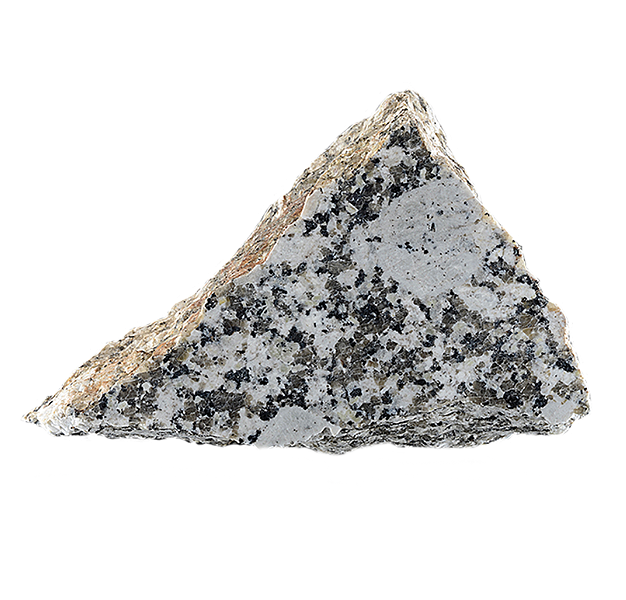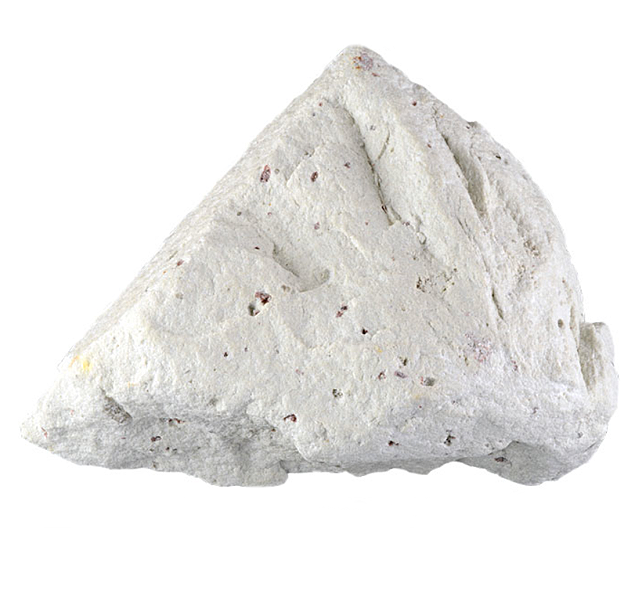
Fact sheet
This highly altered granite porphyry dyke comes from Littlejohn's china clay pit, St Austell, Cornwall. China clay in this area was created while the underlying granite was still cooling, when it was fluxed by fluids rich in water, boron and fluorine, attaching the sodium-rich feldspar. Clay is mined in this area by high pressure water hoses and filtering to remove the remaining micas and quartz. Littlejohn's clay pit has been active since the 1800s and continues to supply fine clays suitable for use in paper making.
In thin section the rock contains fine-grained altered plagioclase and orthoclase feldspars, and unaltered quartz phenocrysts. White mica is also common in the thin section.
A case study of the St Austell granite complex in Cornwall, England, illustrating the range of rocks associated with a granite intrusion. The earliest part of the complex is a siderophyllite (biotite) granite containing muscovite and tourmaline typical of a SW England granite, with many primary magmatic features.
This early intrusion was followed by the intrusion of an evolved volatile-rich magma which was the driving force behind a series of intense hydrothermal processes as volatiles escaped from this magma and helped to establish an extensive alteration halo (aureole). Boron, fluorine and lithium (as well as water) played major roles in the formation of the second intrusion and in the associated hydrothermal processes. Igneous activity lasted around 18 million years from 282 Ma (siderophyllite granite) to 265 Ma (fluorite granite).
